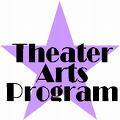
Theater Arts Reviews
|
Renaissance Theater Arts
Theaters during Renaissance
The English Theaters that existed between the Reformation and their shutdown in 1642 is admitted as the English Renaissance Theater or Early Modern English Theater. In this era Elizabethan Theater under rule of Queen Elizabeth from 1558 - 1603, Jacobean theater, under rule of King James I from 1603 - 1625, and Caroline theater, under the rule of King Charles I from 1625 till the shutdown in 1642, were operational. Sometimes the Renaissance Theaters are used with paraphrase to Elizabethan Theater due to the reforms brought up by the theater during that period. Great Playwrights like William Shakespeare and Christopher Marlowe were a part of this era.
The Renaissance Theaters were inspired by the medieval theaters. Its religious traditions, biblical stories, morality and mystery play have the essence of comedy and tragedy from the Greek theater. Theater actors from noble families were in practice before the reign of Elizabeth I, since in the Elizabethan theater there were professional performers acting on stage. They were later replaced by young aspiring actors who were more involved in morality and mystery kind of plays. To get them back, a ruling was announced in 1572 to close all theaters which lacked formal patronage. The noble professionals came back into see to and flourished during that era. But the poor performers opened new theaters in the suburbs. They got permission by saying that they were rehearsing for the plays that were being performed in front of the queen. But these theaters were the actual income provider for the artists rather than the bluestocking theaters.
The plays that were being played at first were same in the royal theaters and the outstanding theaters. But next on the basic theaters developed a taste for plays written on the upper class and the royal family. The public theaters were open to brand-new ideas and stories revolved around frequent subjects. But during Caroline Theater era plays had storyline of the yester years; nothing contemporary was created at that time. Plays were written on history such as on lives of kings like Henry V, Richard III, Edward I and Edward III. Terrible plays compatible The Jew of Malta and Dr. Faustus were very famous with the crowd.
Substantive was a trend to not to repeat the story for two continuous shows. On very rare occasion a play was staged twice in a present. Solitary exception was Thomas Middleton’s A Game at Chess which was performed nine times continuously. This was a challenge for the actors which always kept them on their toes. The plays written by the writers once being sold to the responsibility remained the property of the company. They couldn’t even interfere with the casting, revisions or publications. Women weren’t a part of theater at that time. They couldn’t record plays and nor could they act. The broad character was played by adolescent boys wearing feminine garment and makeup.
The theaters were made out of timber and plaster with thatched roofs. As they were more prone to gate combustion these structures were later replaced with a brick structure with tiled roofs. Theaters were three storied building with open air stage in the middle. The stage was surrounded from three sides by seating arrangement on the three stories; it was either elliptical or square. There were doors at the back of the course that were used by the performers. The third level behind the stage was used being a balcony to interact with the audience. Some of the renowned theaters having such structures were Curtain Theater, The Globe, The Fortune, The Rose, The Swan and The Red Bull. Later on theaters of relatively small size with indoor development started getting popular for privacy sake. It started with the Blackfriars Theater. Other theaters that followed the path were Whitefriars, Cockpit and Salisbury Court Theater.
The Puritan movement was the engender of closure of theaters in 1642. According to the Puritans the theaters were staging indecent stuff like men dressing up as female and also aroused contradictory political thoughts. Most of the theaters were located in places where brothels dwelled. So at the beginning of the English Civil War all the theaters were closed.
 |
 |
 |
The Golden Age Of Greek Theater Arts
Types Of Theatre And Its Effect
Classification Based On Different Themes Arts
More Theater Arts Articles
... Noh, which are flute or Fue, stick drum or Taiko, hip drum or Okawa Otsuzumi and shoulder drum or Kotsuzumi. The chorus comprises of midpoint eight people and is known as Jiutai. The helpers are known thanks to Koken. The stories of Noh drama can be divided into five categories broadly, although there ...
... It was started by Lzumo no Okuni. This new dance style inspired legion other troupes after the sentiment of Okuni s performance in the royal court of Shogunate. Initially it was an all women s performance but when those women turned to prostitution men, because of the ban levied on them, substituted them. ...
The Golden Age Of Greek Theater Arts
... performance of the actors. The audience sat in round ascending stair - case form of seating. Therefore the shape of the pile into which the whole structure is being sculptured is important. The theater arts that emerged during that ticks are mirrored in the plays of today all over the world. Out of all ...
... such height that pronto it can be classified into various categories that further have subcategories. Different regions and civilizations have different forms, which have a deep influence of the culture. Vaguely arts can be distinguished as one depicted by expressing it on a medium like paintings, sculptures, ...

|
| Copyright © 2006-2012 Internet Marketing Tools, All Rights Reserved |